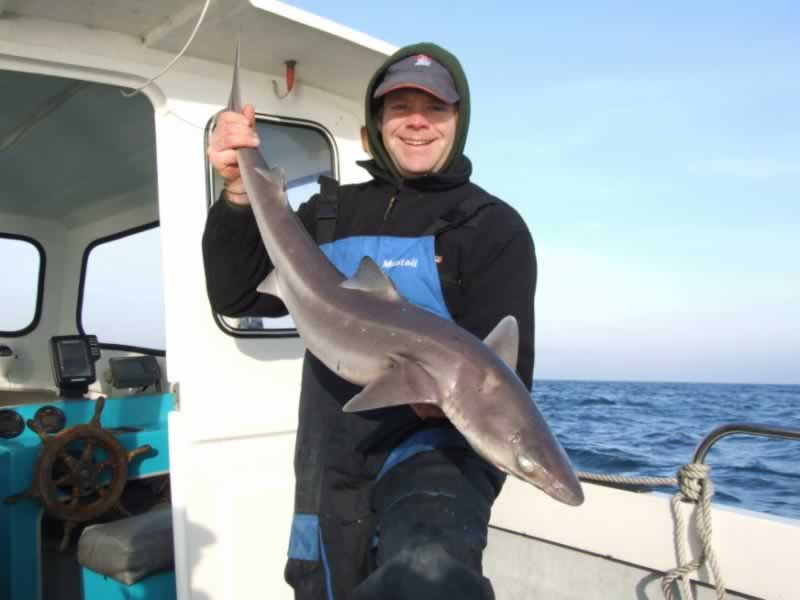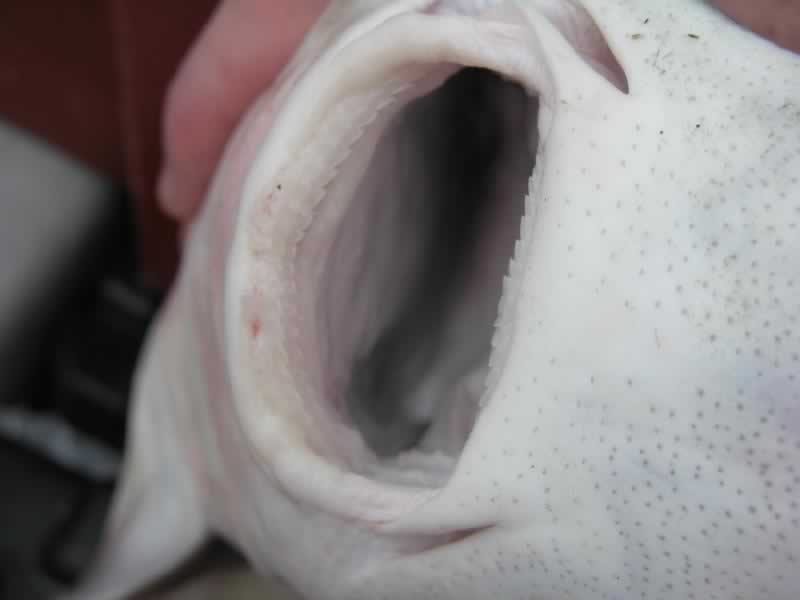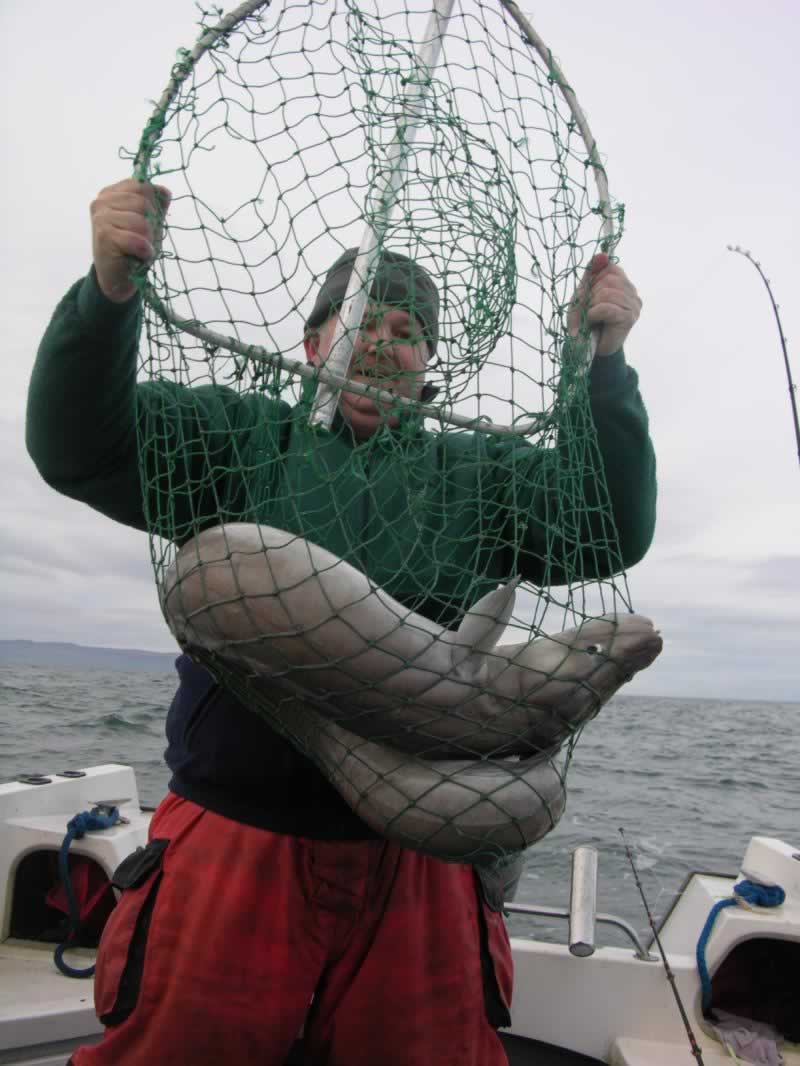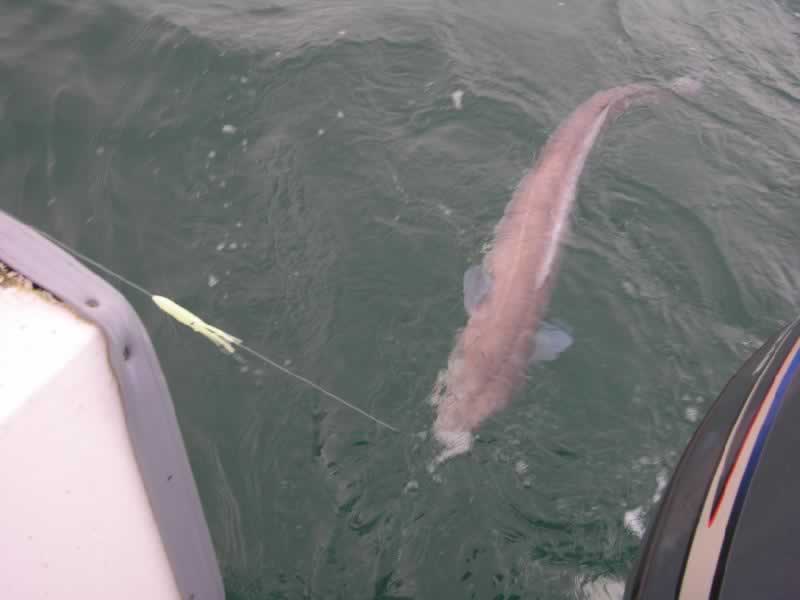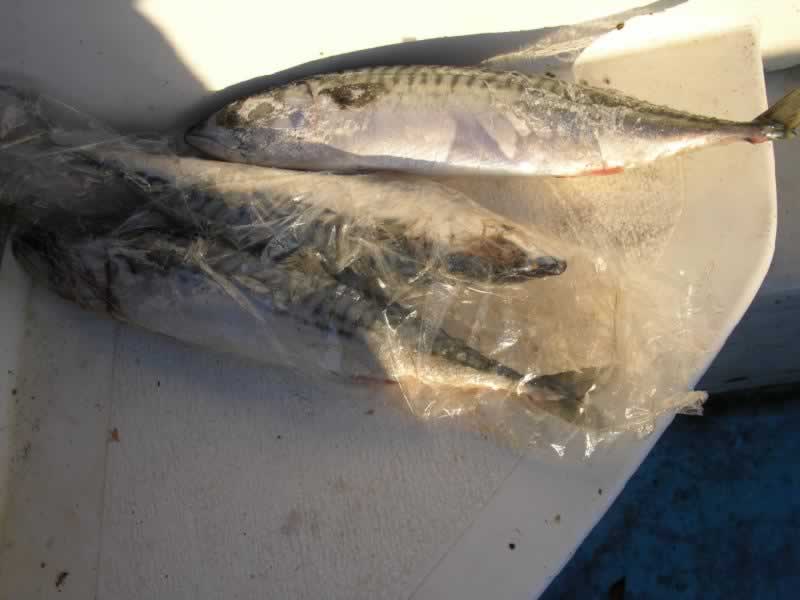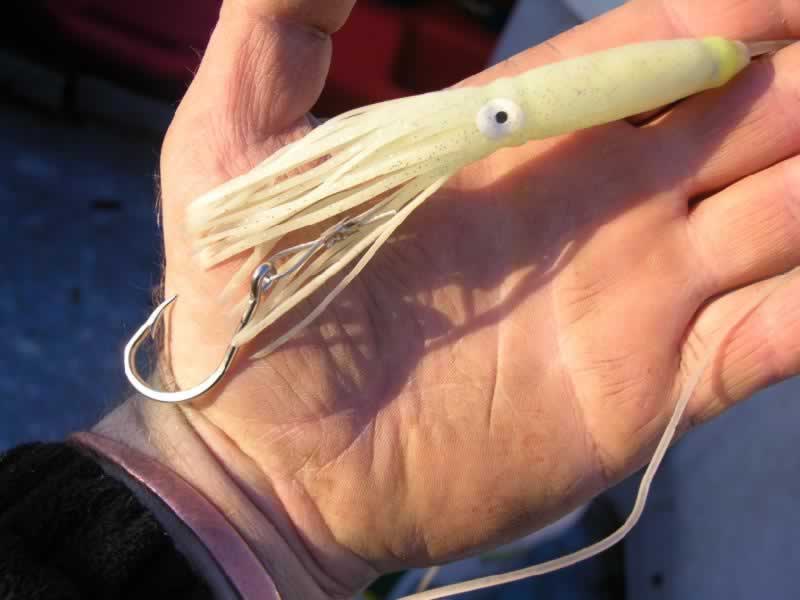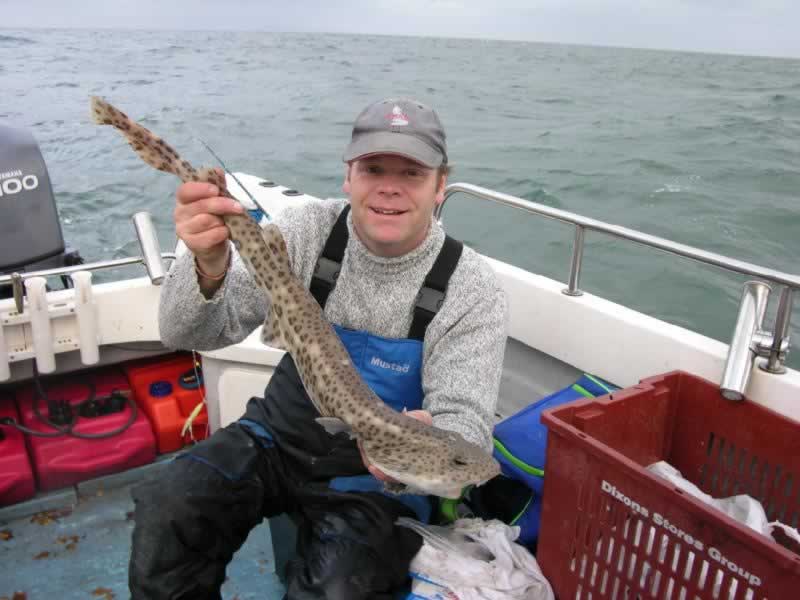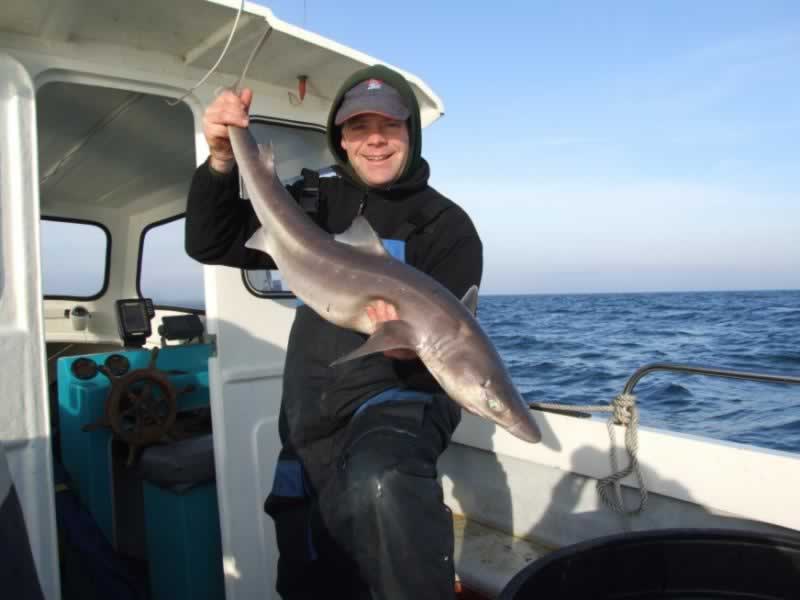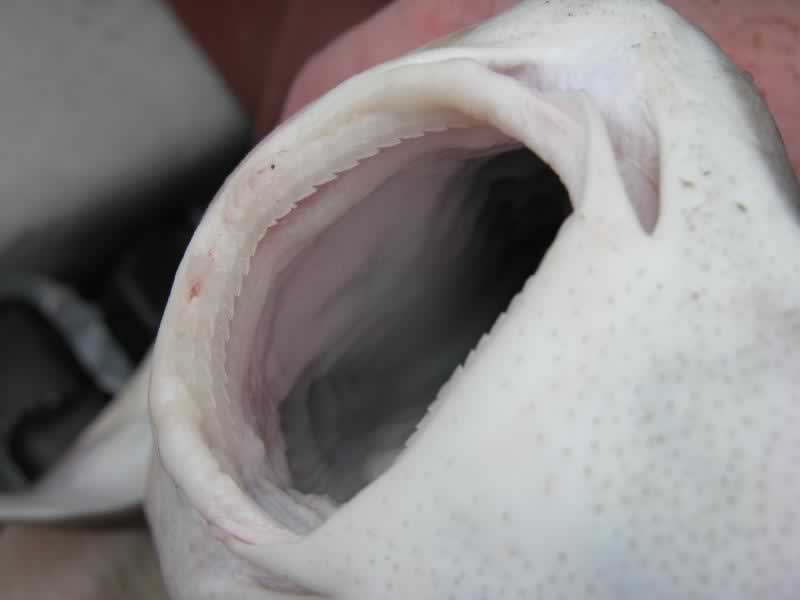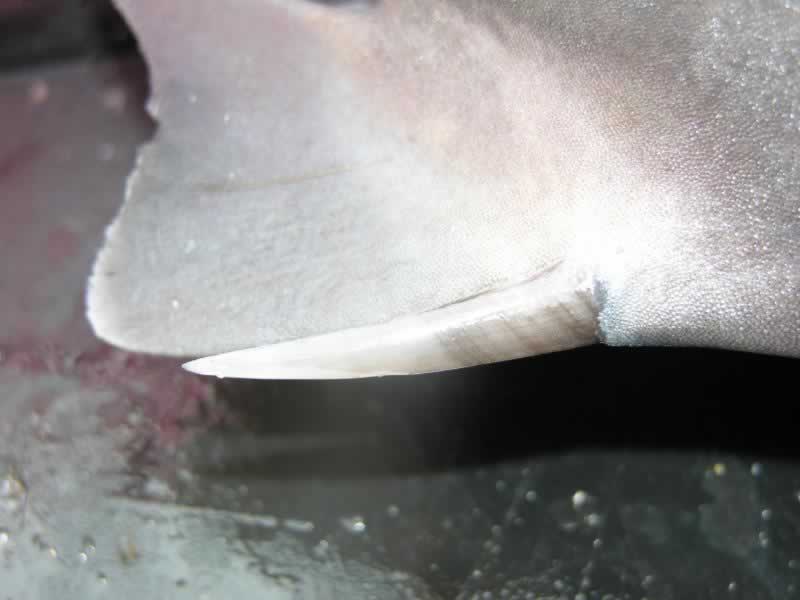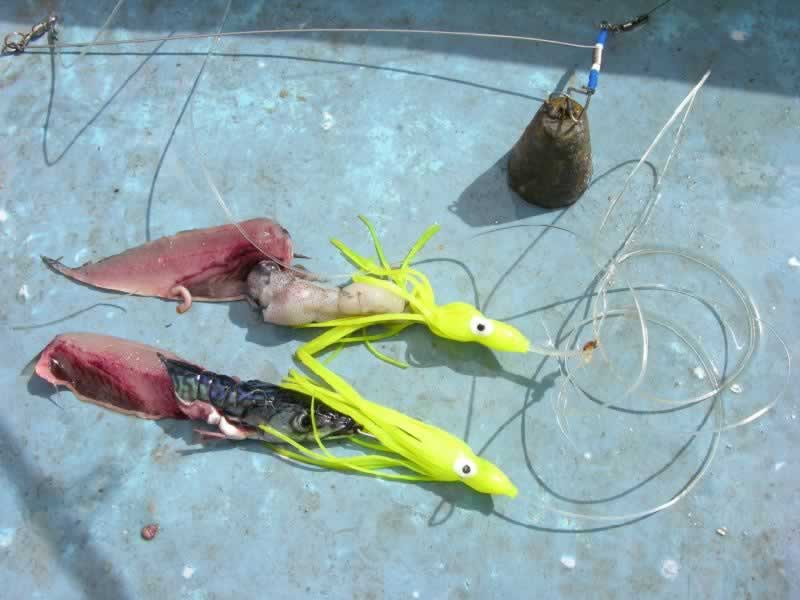Specimen Hunting Series Part 3 Spur Dog
The Spur-dog Challenge
Profile
Latin name
Squalus acanthias
Irish record, 21.25 pounds taken at Dun Laoghaire by Charlie Robinson on 10.8.2001 Specimen weight, Twelve pounds or 5.443 kilos
Article 3 of a twelve part series, originally written for Irish Angler magazine several years ago
The trip
In my experience, the month of March is the worst time of the year to target a specimen fish. There is the possibility of a large Lesser- Spotted Dogfish from marks along the Antrim Coast but this would be considered a long shot. Brown Trout can be a worthwhile venture in Corrib and the Cong Canal but finding the time to travel so far has proved almost impossible lately. After much thought, I decided on a hotspot my mates and I had discovered last year that had fished exceptionally well on every occasion. It had been producing large numbers of reef Conger, Dogfish, Bull Huss, the rare but beautiful Black-mouthed Dogfish and more importantly for the purpose of this article, some superb Spur dog. Although “spurs” are a migratory fish, for some reason this area seems to hold small amounts of fair sized specimens throughout the winter.
It is fair to say that the weather has not been kind for the boat angling community recently, so a small break in the constant storms was welcomed with great enthusiasm. Being a mid-week adventure, my angling mate and fellow specimen hunter, Dave Craig was the only bloke that could take a day off to join me in the specimen Spur dog hunt. Arrangements were made by phone and tackle prepared. We met the following day at the harbour and went through the standard procedures required in launching my boat. By this stage, if I say so myself, we have launching down to a fine art, along with all the necessary safety checks, and was afloat in no time at all.
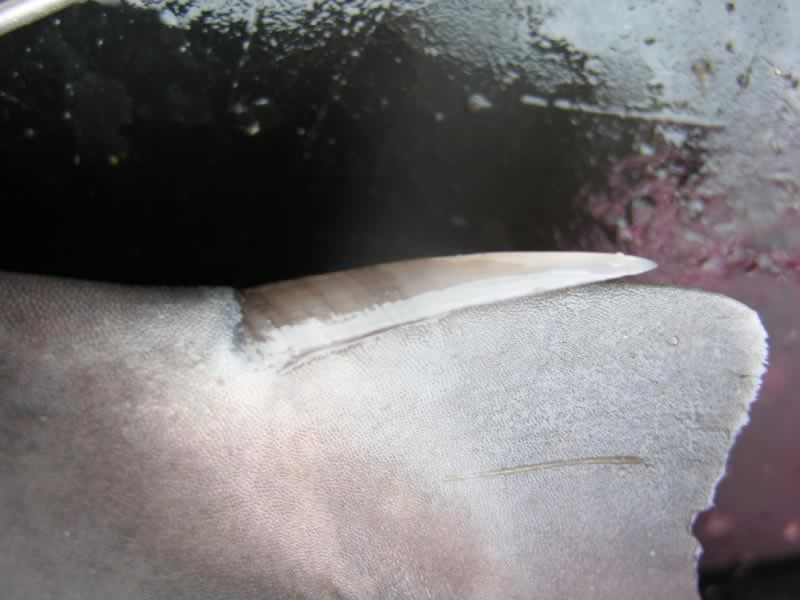
Spur dogs armoury, razor-sharp teeth and spines
The hotspot in question is a deep gulley lying in three hundred feet of water, and a short steam from port. At this time of year, fresh Mackerel are almost impossible to find so there is no point in wasting time looking for them. With a great supply of bait caught and frozen down during the summer months, along with Calamari Squid, Whiting and Sand eel, we had more than enough for a day’s sport, and so, headed directly to the mark.
As with Skate fishing, it is a good idea to anchor while the tidal flow is at its strongest, allowing the onion sack stuffed with mashed Mackerel, Herring and bran to send out a strong scent trail. This is attached to the anchor chain with a cable tie and carefully lowered over the gunnels. With the tide only two hours into the ebb, the anchor “grabbed” the seabed, swinging the boat viciously into the tide. The flow is obviously too strong at present which leaves plenty of time to discuss tactics and tackle set up, in the hope of sorting out a few Spurs, and if we are lucky, a couple hitting the double figure mark.
Dave was first to wet a line but the ludicrous weight of four pounds of lead was still not enough to keep a bait on the seabed. For me, this is time to relax and use the opportunity to enjoy a cup of tea and a sandwich. This is the whole essence of specimen hunting, in trying to be in the right place at the right time, using the correct bait and appropriate tackle, and having the patience and confidence to see it through. This sequence does not always “gel” to give the desired outcome, but more often than not, you will find a great deal of success.
An hour passed and we tried again, this time with three pounds of lead, which proved adequate weight to stay in contact with the bottom. As with every previous occasion on this mark, the rod tips nodded within minutes of hitting the seabed and the ever-present Dogfish were soon coming aboard in singles and double shots. “Doggies” can be a nuisance at times, I have said this before in previous articles, but they are a vital link in the bio-diversity of all that goes on below the surface and must be treated with the same respect as any other fish, regarding careful un-hooking and quick return to the water.
As the tide eased further, and countless Dogfish later, we were able to reduce the lead weights to a respectable pound and a quarter, a godsend when playing fish in over three hundred feet of water! The drop in tidal flow signalled the arrival of a new species, namely small Conger averaging six to twelve pounds. Although small, they make a welcome change to the dogs. It can be amazing how a difference of one or two hours in the tide can lead from no fish to constant bites, almost in the flick of a switch. Identical to previous trips here, the Spur dogs now decided to make an appearance and we never knew whether a Conger, a Spur or a Doggie would show next. The Spurs ranged from eight to ten pounds and hopes were now high of landing the elusive twelve pounder. Dave struck into a violent series of nods on the rod tip, a textbook Spur dog bite, and it became obvious that this was an excellent fish. I stood by with camera in one hand and landing net in the other, praying for a large female Spur. It wasn’t to be, but how can we be disappointed when our target species turned out to be a fabulous Conger of over thirty pounds. I reminded Dave that we were after specimen Spur dogs, not specimen Conger!
He didn’t care, having just doubled his personal best! Coming near to slack low water, it was my turn to strike into a quality fish that again, gave the typical, heavy nod of a large Spur. Is it a Spur, a Conger? I had no idea by this stage but hoped for the best. A good ten minutes later and Dave slipped the landing net under a heavy female Spur, and without wasting any time, she was weighed while still in the net, pushing the scales round to eighteen and a half pounds. Deducting two pounds for the net, she came out at a very respectable sixteen and a half pounds and well over the twelve- pound specimen barrier. Job done and pressure off, but enough time to photograph and release her and carry on fishing the rest of the slack water as the sun slipped down over the horizon. The dogs carried on feeding, along with some small Conger, but as the boat swung out and off the scent trail with the change in tide, the bites ceased, signalling the end of our session. With nine hundred feet of anchor rope out, there was still a lot of work to do before our steam to shore, but yet again, this local mark proved worthy of any angling destination around Ireland, especially during this leaner time of the year.
A decent Spur, and specimen at sixteen pounds
Interesting facts
Out of all our native sharks, and indeed, all fish around our coastline, Spur dog are believed to be the longest-lived species, with evidence showing an incredible lifespan of well over seventy years, if given the chance. One particular documented case was of a Spur dog tagged and released, part of over eighteen thousand fish tagged for research purposes. This Spur dog was tagged as an adult, and re-captured some thirty-four years later, with tests showing that it still had many years life expectancy to go! This data alone demonstrates the value of tag and release programmes.
Spur dog are a small, pelagic shark and a member of the elasmobranch family, which means their skeleton is made entirely of cartilage. Being viviparous, the offspring develop inside the body and are born live as opposed to dogfish and rays that lay egg cases. As with all members of the shark and ray family, Spur dog are a relatively slow growing, slow to mature species, which leaves them vulnerable to commercial over-fishing.
At time of writing, they may be on the verge of stock collapse and vital protection is needed immediately to enhance future stocks. This is easily seen where records show that landings of Spurs during the nineteen sixties was in the region of fifty eight thousand tonnes per annum; this is now as low as fifteen thousand tonnes per annum, the stocks are so depleted! They are a vital link in the food chain with strong evidence that Spur dog, and their young are a food source for Common Skate, another vulnerable species. For further information on all sharks, rays and skate, check out www.sharktrust.org based in Plymouth or log onto the sea anglers conservation network at www.sacn.org.uk
These people work tirelessly in lobbying parliament with the eventual goal of sensible management and protection of our vulnerable species around our coastline.
Bait
As with most shark species, Spur dog are mainly predatory in feeding habit. They will readily take most shoaling fish species native to Ireland such as Mackerel and Herring. I have found through experience that they have a particular fondness for Whiting, having on many occasions reeled in Whiting with teeth marks along the flanks or completely bitten in half! Usually when this occurs, it is not long before a Spur is landed or a hook length goes missing. A large bait will sort out the bigger specimens and help to deter un-wanted Dogfish. Many of my larger Spurs have been taken on whole Mackerel baits whilst targeting Common Skate. Try a full side of Mackerel or whole Calamari Squid, or even better if available, use a whole, fresh Whiting.
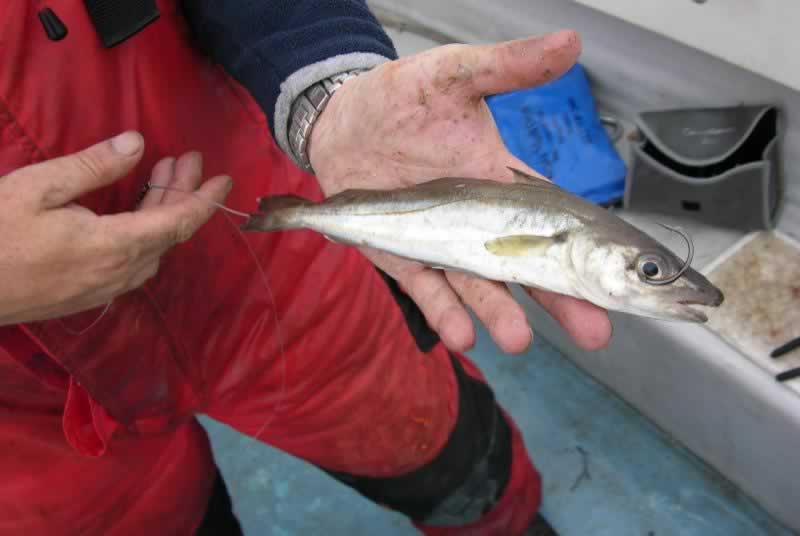
Tackle
Powerful tackle is not necessary to play and land Spur dog, they put up a reasonable scrap but nothing too testing. The problem lies in the venue and habitat. Personally speaking, my Spur dog marks tend to be deep, fast flowing venues over rough or patchy seabed. Over three hundred feet of water and a fast tide will dictate your choice of tackle. Nothing less than a thirty- class rod and 4/0 reel will last the pace. Braid is essential as a main line to cut through the tide allowing the use of smaller lead weights.
As far as the end tackle goes, there are a few things to bear in mind when targeting Spurs. First and foremost, they have small but surgically sharp teeth that interlock with engineered precision. Lighter nylon line will not stand a chance against these gnashers; neither will your fingers so be careful. I usually use nylon-coated wire as a hook length, but if you choose nylon, it needs to be in excess of 150lb b/s. I have even had this bitten off on several occasions and, as previously stated; normally use wire.
Spurs have another defensive mechanism that gives them their name. Directly in front of each of the two dorsal fins are spurs or spikes that are extremely sharp with a razor like forward edge. Care must be taken whilst un-hooking as these can cause serious punctures or lacerations to the skin. Do not cut these spikes off with pliers as I have witnessed some charter skippers doing in the past! They are provided by nature and are there for a reason. If you catch a Spur and are unsure how to handle it, it is best to un-hook it with a T-bar above the water without the need to bring the fish on board. These spurs on the dorsal fins are also excellent at cutting main line so build your main trace with two hundred pounds b/s nylon to avoid breakages.
Tactics
It is always sensible to target an area that is known to produce Spur dog, or has done so in the past. Look on admiralty charts for interesting features such as gullies or deep holes, or headlands running into deep water with strong tides. Mixed or patchy seabed is preferred. They can be caught on the drift but my greatest successes have been at anchor with a good scent trail provided using a bag of chopped Mackerel and bran attached to the anchor rope. This brings the fish to the boat rather than trying to drift into them. It is usually necessary to struggle through the fast part of the tide while the scent trail does its work, to benefit the slack water mayhem that can ensue.




